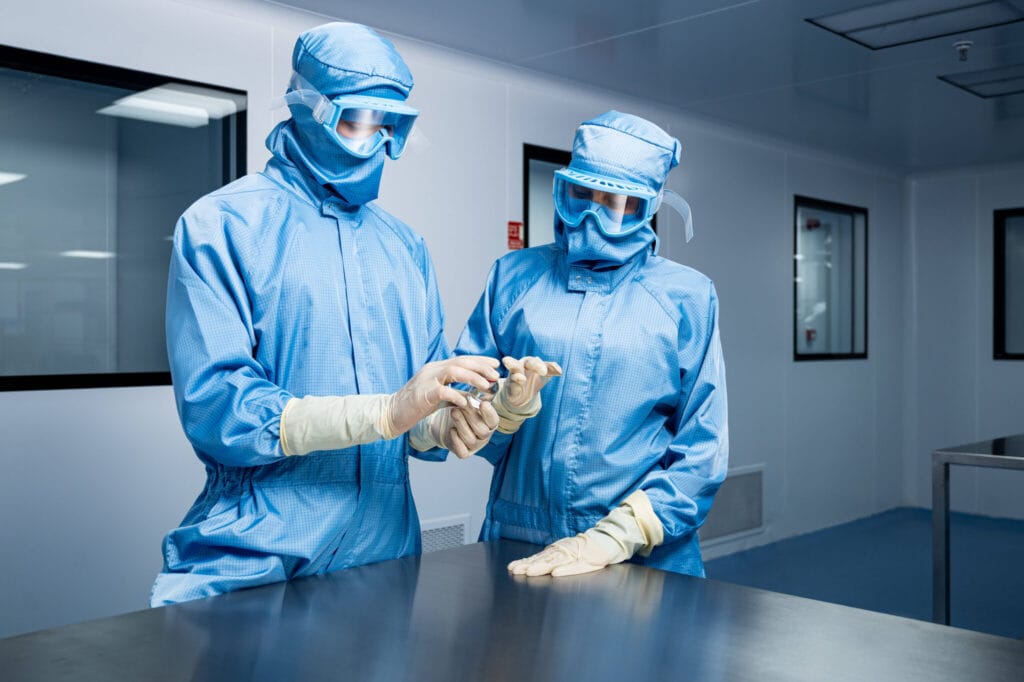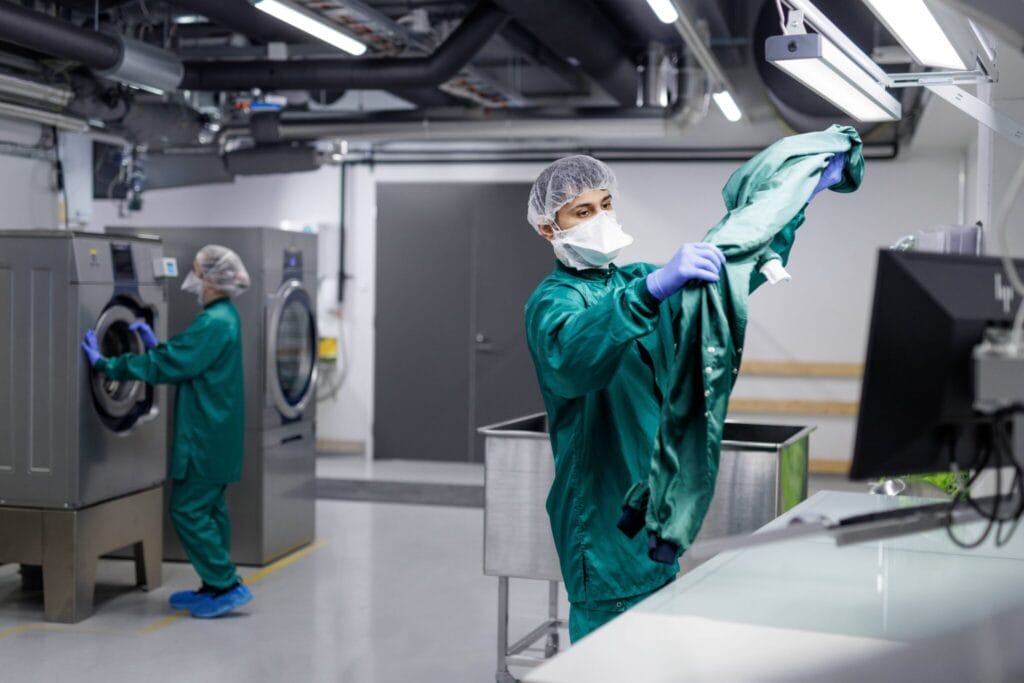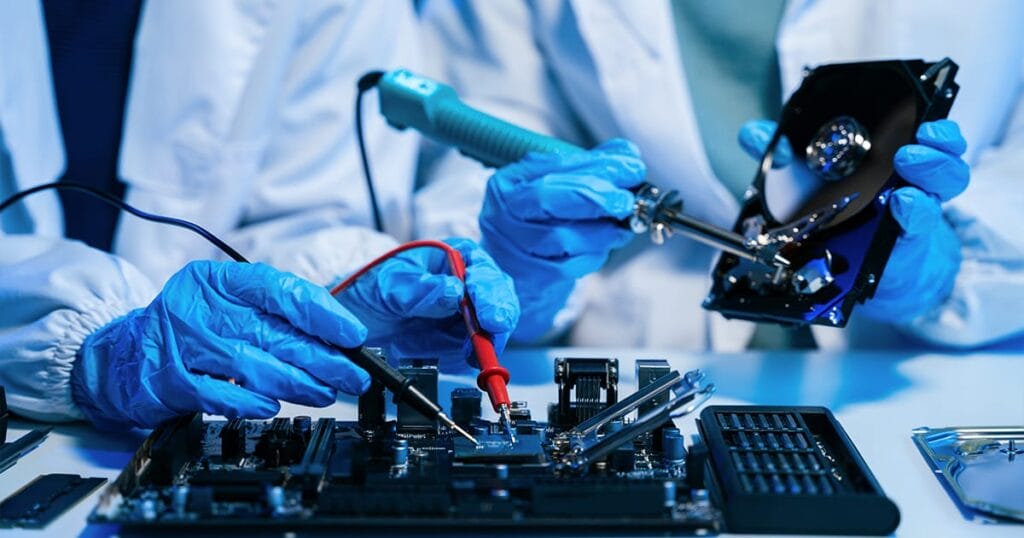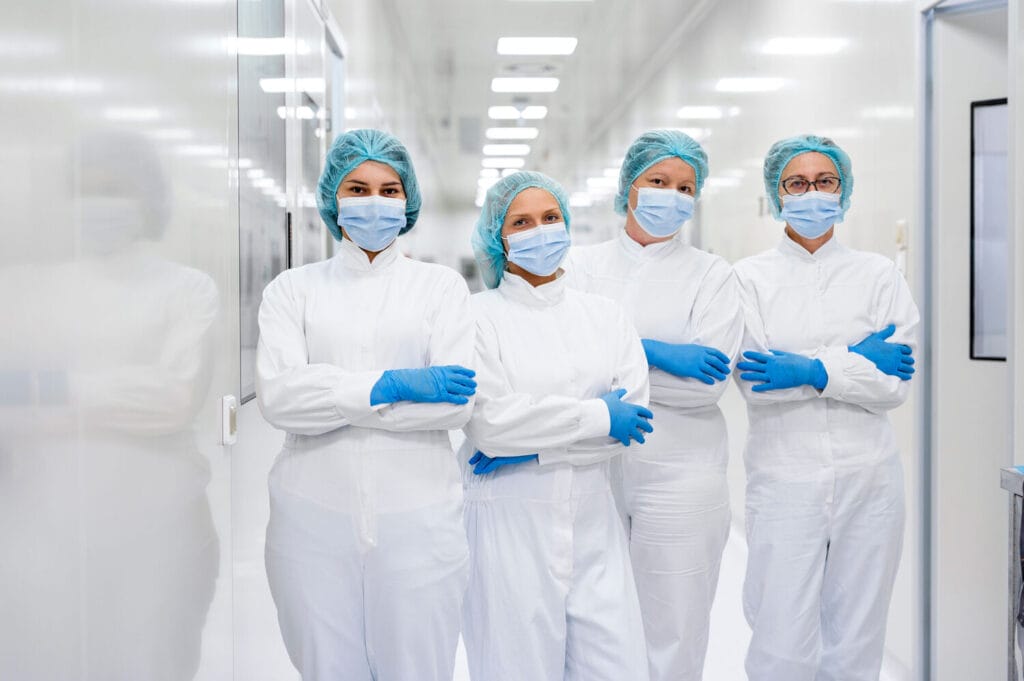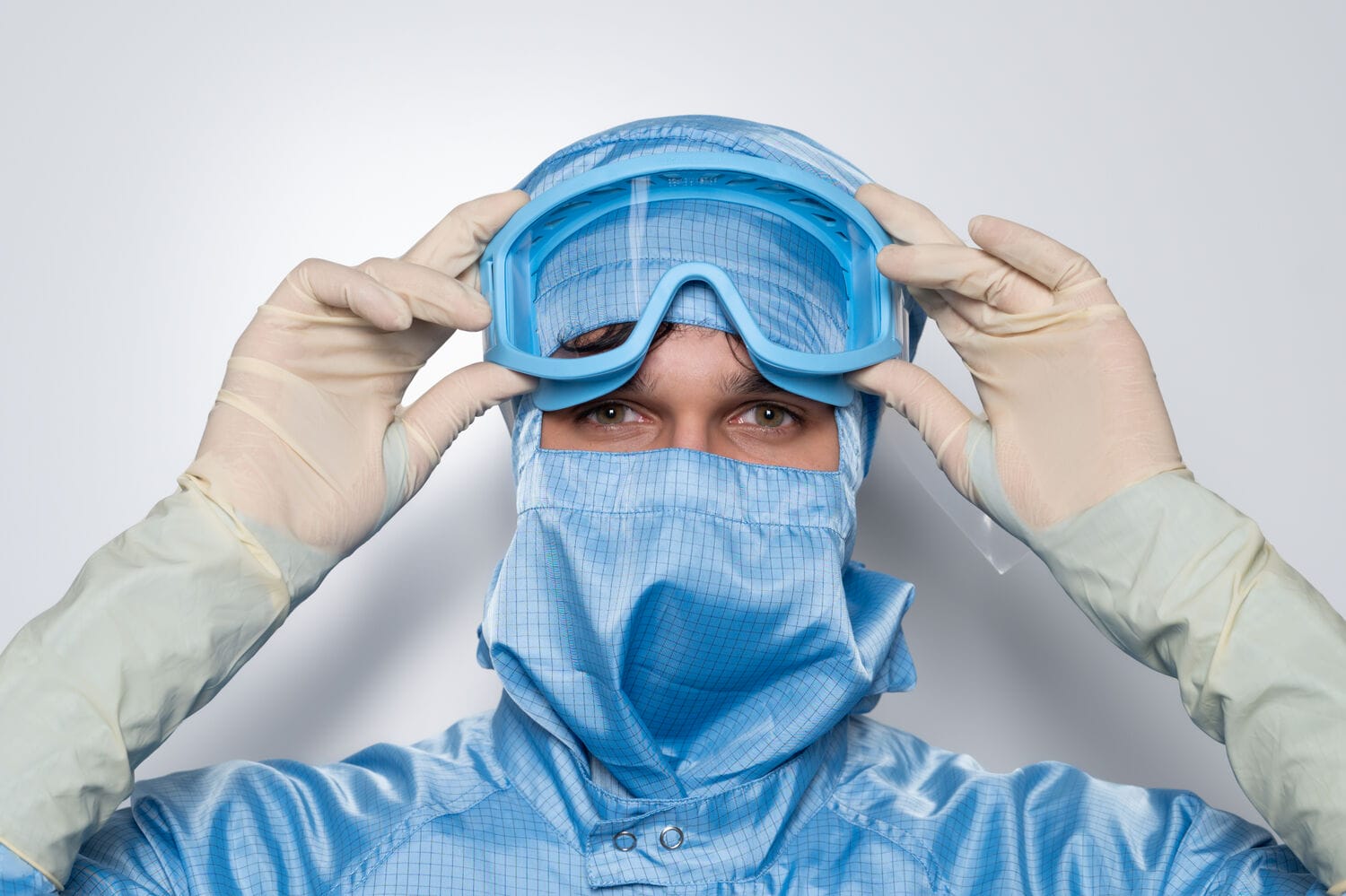
What are cleanroom garments?
Cleanroom garments are specially designed clothing worn in controlled environments to help stop contamination at the source – people. Whether it’s a speck of dust, a droplet, or a microbe, these garments act as a barrier to protect products and sensitive processes from unwanted particles.
In industries like pharmaceuticals, electronics, and biotech, the stakes are high. A single contaminant can impact product safety or performance. That’s why cleanroom garments play such a vital role. They support product integrity, protect employees, and keep operations running to the highest standards.
What materials are used in these garments?
The fabrics used for cleanroom garments aren’t chosen at random. They’re carefully selected to meet demanding standards for cleanliness, comfort, and durability.
You’ll often find polyester in these garments, thanks to its low particle shedding and good chemical resistance. Polypropylene is another popular choice, offering breathability and lightweight comfort. In some cases, carbon fibres are added to provide anti-static protection, which is especially useful in environments where static can damage sensitive components or attract particles.
The final choice of material always depends on the cleanroom’s specific requirements, such as the ISO class, the type of work being done, and the level of contamination control needed.
How are cleanroom garments maintained?
Keeping cleanroom garments in top shape requires a specialised process. These garments aren’t washed in regular laundry facilities. They go through validated laundering in controlled environments, using specially developed methods to make sure no new contaminants are introduced.
After laundering, garments are packed and stored under strict conditions to avoid any recontamination. Regular checks and repairs help extend the lifespan of each garment, ensuring they stay effective and safe to use. With everything tracked and documented, this process supports compliance and consistency every step of the way.
What industries require cleanroom garments?
You’ll find cleanroom garments wherever there’s a need for ultra-clean environments. In the pharmaceutical industry, they help protect sterile medicines and ensure compliance with regulations. In electronics, they prevent static or dust from damaging sensitive components.
They’re also used in biotechnology, aerospace, healthcare, and high-end food processing. While the specific needs may vary from one industry to another, the core goal remains the same: keeping contaminants out of critical production spaces.
How do cleanroom garments differ from regular protective clothing?
Cleanroom garments may look similar to standard protective wear, but they serve a different purpose and are built in very different ways.
They’re made from materials that don’t shed particles. Their seams, cuffs, and closures are carefully designed to reduce contamination risks. Everything about them – from the way they’re worn to how they’re handled after use – is tailored to cleanroom protocols.
In short, these garments aren’t just protective. They’re performance-driven, tested for cleanliness, and designed to work in environments where precision matters.
What are the standards and regulations for cleanroom garments?
Cleanroom garments must meet strict international standards. One of the most important is ISO 14644, which sets out the rules for cleanroom classifications and the levels of cleanliness required. These guidelines help define what kind of garments are suitable for each cleanroom grade.
For pharmaceutical environments, compliance with EU GMP Annex 1 and FDA regulations is also essential. These frameworks go further, covering garment handling, laundering limits, and qualification procedures. Following these standards isn’t just about ticking boxes, but how companies stay audit-ready, compliant, and confident that their processes are safe.

